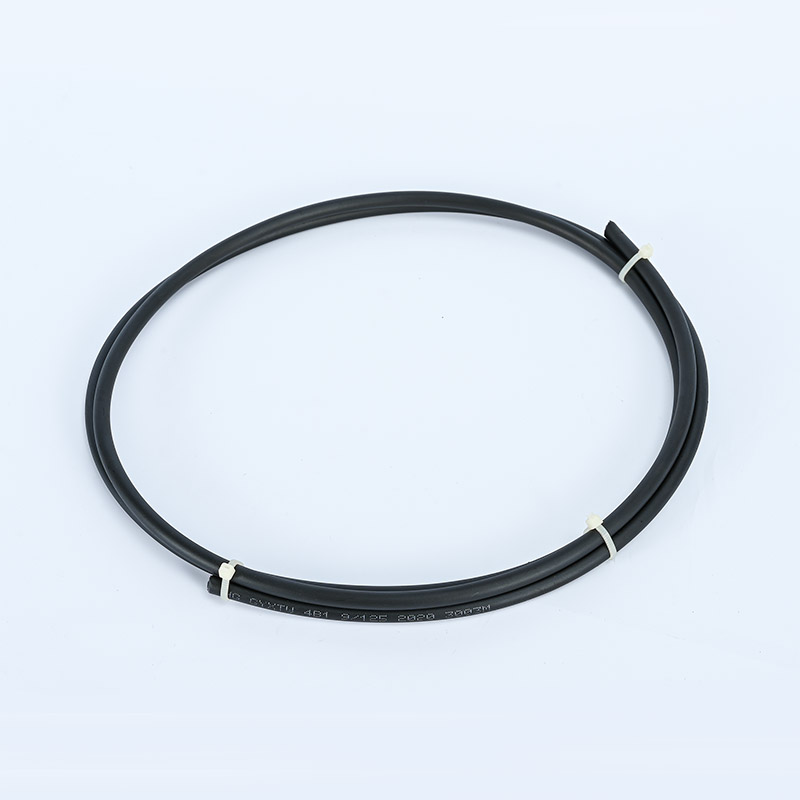The Composition of Coaxial Cable
2022-02-26
The composition of coaxial cable
1. Inner conductor
The inner conductor is usually composed of a solid conductor. Using the skin effect of high-frequency signals, an empty copper tube or a copper-plated aluminum rod can be used. For user networks that do not need power supply, copper-clad steel wires are used. It is recommended to use copper-clad aluminum wire for the network or main line, which can not only ensure the transmission performance of the cable, but also meet the requirements of power supply and mechanical performance, reduce the weight of the cable, and reduce the cost of the power cable.
2. Insulating medium
The insulating medium can be polyethylene, polypropylene, polyvinyl chloride (PVC) and fluoroplastic, etc. The commonly used insulating medium is polyethylene with low loss and good process performance.
3. Outer conductor
The outer conductor of the coaxial cable has a dual function, it not only acts as a wire of the transmission circuit, but also has a shielding function. The outer conductor usually has three structures.
(1) Metal tubular. This kind of structure is made of copper or aluminum tape longitudinally wrapped and welded, or a seamless copper tube is extruded and drawn. This structure has the best shielding performance, but poor flexibility, and is often used in trunk cables.
(2) The aluminum-plastic composite belt is longitudinally lapped. This structure has better shielding effect and low manufacturing cost, but since the outer conductor is a circular tube with a longitudinal slit, the electromagnetic wave will leak through the slit and should be used with caution.
(3) Combination of woven mesh and aluminum-plastic composite tape longitudinally. This is developed from a single woven mesh structure. It has the characteristics of good flexibility, light weight and reliable joints. Experiments have shown that the use of a reasonable composite structure can greatly improve the shielding performance. At present, this type of structure is widely used. use.
4. Sheath
Outdoor cables should use black polyethylene with excellent climatic characteristics, and indoor user cables should use light-colored polyethylene for aesthetic reasons.

1. Inner conductor
The inner conductor is usually composed of a solid conductor. Using the skin effect of high-frequency signals, an empty copper tube or a copper-plated aluminum rod can be used. For user networks that do not need power supply, copper-clad steel wires are used. It is recommended to use copper-clad aluminum wire for the network or main line, which can not only ensure the transmission performance of the cable, but also meet the requirements of power supply and mechanical performance, reduce the weight of the cable, and reduce the cost of the power cable.
2. Insulating medium
The insulating medium can be polyethylene, polypropylene, polyvinyl chloride (PVC) and fluoroplastic, etc. The commonly used insulating medium is polyethylene with low loss and good process performance.
3. Outer conductor
The outer conductor of the coaxial cable has a dual function, it not only acts as a wire of the transmission circuit, but also has a shielding function. The outer conductor usually has three structures.
(1) Metal tubular. This kind of structure is made of copper or aluminum tape longitudinally wrapped and welded, or a seamless copper tube is extruded and drawn. This structure has the best shielding performance, but poor flexibility, and is often used in trunk cables.
(2) The aluminum-plastic composite belt is longitudinally lapped. This structure has better shielding effect and low manufacturing cost, but since the outer conductor is a circular tube with a longitudinal slit, the electromagnetic wave will leak through the slit and should be used with caution.
(3) Combination of woven mesh and aluminum-plastic composite tape longitudinally. This is developed from a single woven mesh structure. It has the characteristics of good flexibility, light weight and reliable joints. Experiments have shown that the use of a reasonable composite structure can greatly improve the shielding performance. At present, this type of structure is widely used. use.
4. Sheath
Outdoor cables should use black polyethylene with excellent climatic characteristics, and indoor user cables should use light-colored polyethylene for aesthetic reasons.



